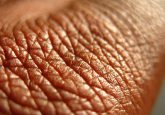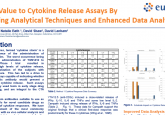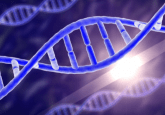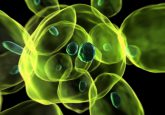Flow cytometry: features, faults and future hopes
Christoph Eberle was trained in biochemistry at the University of Bayreuth (Bavaria, Germany), where he graduated with a bachelor’s and master’s degree. Subsequently, he moved onto the University of Bremen (Bremen, Germany) for a PhD in organic chemistry under the tutelage of Professor Franz-Peter Montforts, synthesizing novel porphyrin and porphyrin-fullerene derivatives for immobilization on gold surfaces. Funded by the German Academic Exchange Service (DAAD), he spent 3 months as visiting scientist in the laboratories of Professor Luisa Maria Abrantes at the University of Lisbon (Lisbon, Portugal) to characterize the electrocatalytic and sensing properties of his compounds.
Following postdoctoral research at Dartmouth College (NH, USA), he began his career in laboratory medicine at the University Medical Center Göttingen (Lower Saxony, Germany). He later transitioned into private industry, holding lead scientific positions at the Eurofins Central Laboratory (Washington, DC and Lancaster, PA, USA) and Envigo (Somerset, NJ, USA), where he focused on fit-for-purpose validation of multiple cell-based assay formats, preclinical and clinical trial sample testing and reporting. Dr Eberle joined Charles River as a principal scientist at the Worcester site (MA, USA) in 2017 to provide immunology testing expertise in support of the company’s integrated oncology drug discovery services. As a member of the local pharmacology team, he oversees assay development and ex-vivo analysis using flow cytometry. He is a member of various professional societies dedicated to flow cytometry, clinical diagnostics and research, including the International Society of Advancement of Cytometry (ISAC), the Institute of Clinical Research (ICR) and the American Association of Clinical Chemistry (AACC). In 2013 he was elected an Associate Fellow of the AACC Academy, formerly the National Academy of Clinical Biochemistry (NACB) and received a Clinical Chemist’s Recognition Award in 2014.
1 Please introduce yourself and explain your interest with flow cytometry?
Good morning! My name is Christoph Eberle and currently I am working as a principal scientist with Charles River Laboratories at its site located in Worcester (MA, USA). Although I have been utilizing flow cytometry over 9 years at almost every stage of drug development except for Phase III trials, I became an enthusiastic flow cytometrist in somewhat of a roundabout way. Initially, I trained as a biochemist and molecular biologist and during my scientifically formative years this exposed me to a depth and diversity of research methods and concepts. Throughout my graduate programs, I increasingly focused on natural product synthesis and its applicability in materials science, and finally graduated with a PhD in organic chemistry. However, I subsequently did not continue with a career path in industry or academia, which would be common for a synthetic chemist. Instead I got introduced en passant to immunology and particularly flow cytometry-based testing for diagnostic purposes. This coincided with my tenure at the full-service central laboratory of the University Medical Center Göttingen in Northern Germany. From clinical diagnostics I moved on to specializing in flow cytometry applications, which now grow in demand alongside the field of immuno-oncology (IO).
2 What are your current research focuses?
At Charles River we are contracted to deliver research services for a diverse clientele coming from biotech start-ups, pharmaceutical companies, academic or governmental institutions, respectively. Correspondingly, in our day-to-day work we can get exposed to a variety of methodologies and experimental programs. Specifically, our research work and scientific consulting focuses on the current facets of immuno-oncology, with questions revolving around tumor immunology to immunotherapy drug resistance and effective combination treatments. Besides that, the company has integrated many different service lines with a global reach. These support all major therapeutic areas through each phase of drug research and development. Though a continuum, this process still varies from product to product.
3 Describe how you use flow cytometry? What are the advantages and disadvantages of the technique?
Flow cytometry is rightfully praised as a versatile instrument platform, which offers rapid multiparametric characterization of different cell types and because millions of cells are counted it provides sufficient statistical power. The way currently used in our laboratory space only showcases some applications that are possible. At our testing site ex vivo analysis using flow cytometry is embedded in early research services to support novel drug discovery and characterization. Our local pharmacology team currently runs approximately 110 in vivo mouse studies per year using validated syngeneic and humanized models to help assessing the efficacy of candidate anti-cancer agents. These experimental dosing regimens are largely exploring, whether and how an immune response can be triggered that effectively can stop and shrink tumors. Researchers are now better understanding the immune system’s contribution to many pathogeneses including cancer. It is known that tumor cells can well avoid being recognized and destroyed by an immune response. Intervening to reset the so-called cancer immunity cycle is therefore at the core of many new therapeutic strategies. Primarily, we process specimen from selected study mice for immunophenotyping by flow cytometry to characterize the tumor microenvironment and specifically changes in the number of its leukocyte infiltration under variable dose administrations of novel IO agents. We routinely profile the lymphoid and myeloid compartment within this environment, which is kept immunosuppressive to support tumor growth. Naturally occurring tumor infiltrating leukocytes, or TILs exhibit anti-cancer activity; they are extensively studied, because they are considered valuable both as prognostic factor and therapeutic target.
Now, on the one hand, to assure the best possible data quality we process fresh tissue and body fluid samples, since we need to phenotype viable cells, even if samples are fixed during the staining procedure. Therefore, sample stability post-processing and post-fixation is limited, but both parameters are important to assess. On the other hand, we cannot tell morphological features of stained cells and where those would have been localized within a tissue architecture, because the structure is broken down to bring single cells in suspension for flow cytometric analysis. The latter one allows real-time, high-throughput identification of the frequency of major immune cells and subsets depending on which preselected surface and intracellular antigen markers were bound by the antibody fluorophore conjugates used for detection.
4 What are the challenges you face with using flow cytometry?
Flow cytometric methods have been categorized as relative and quasi-quantitative, that is readouts from unknown samples cannot be compared to a calibration standard with a known quantity of the test analyte. What remains challenging is to tackle the lack of reference material suitable for measurements by flow cytometry. For assessing its accuracy there are only substitute solutions as of now. For our purposes we need to timely adapt assay development to different project needs, which are exploratory in nature. But within these scopes we do not need to produce and document all the evidence with the stringency required to complete bioanalytical method validation. Achieving this is generally costly and time-intensive. The key concept described in the current literature is called fit-for-purpose, which has been translated to flow cytometric methods as well. However, we typically design and optimize a panel, but often do not go beyond titrating antibodies and running a small-scale precision study to get an understanding of assay variability. If possible, we try to include recombinantly engineered detection antibodies, which work well in some of our experiments to obtain a stable signal. Besides analytical limitations specific to flow cytometry analyzing datasets that are generated from phenotyped samples can be another source of variability. No universally applicable approach is in place that is to be followed. Some may argue it therefore resembles more of an art, as the data analyst can take a lot of freedom to place gates for identifying target cells. Certainly, the analysts’ educational background and subject matter expertise plays a role more than ever before, since marker analysis is no longer limited to standard immune populations, like TBNK cells. Most multicolor panels are now customized to also characterize very specific, very rare subsets. All these factors require ongoing training for qualified analysts to be aware of the underlying biology, to know how to include appropriate controls and how to apply proper gating strategies for consistent results across experiments.
5 How can the field be regulated and standardized?
This need has been recognized and expert panels initiated technical and scientific discussions to answer the question of what good flow cytometric practices should be, how these are to be maintained and implemented. The field already has been moving towards standardization and self-regulation – in general and particularly when guiding method validation is critical in decision-making on biomarkers and pharmacodynamics of new therapeutics. Various professional societies led an initial consensus, which will be refined, as regulatory government agencies are weighing in on these matters. However, while waiting for official guidance documents, we presently must rely on a few White Papers and mostly the recommendations by the ICSH/ICCS Working Group. Published in 2013, these references instruct on all practical aspects of the flow cytometric workflow – from sampling to post-acquisition data analysis. Besides that, requests for Minimum Information about a Flow Cytometry Experiment (MIFlowCyt) have been compiled and promoted. These measures complement similar efforts to help in verifying reported data independently. To me both benchmarks provide checklists for developing each laboratory’s own methodology to avoid pitfalls in setting up multiplexed fluorescence assays.
6 Where do you hope this field will be in 5–10 years’ time?
Recently, the World Health Organization (WHO) incorporated flow cytometry in its model list of essential in vitro diagnostics. To me this underlines this platform’s relevance for primary patient care, and I hope to see more recognition beyond its status as a sophisticated research tool. Though being known for more than 50 years, fluorescence-based flow cytometry regained momentum in the new era of immunotherapies we entered. But not just immunology-focused researchers have turned to this technology. The frontier of flow cytometry applications is expanding. Which role mass cytometry will play in all of this, remains open; the underlying technology is entirely different, as it is based on elemental mass spectrometry. For utilizing this way of detection, cells are tagged with heavy metal isotopes instead of fluorescent dyes, therefore eliminating the problem of spectral overlaps. Clearly, there are inherent analytical advantages in terms of accuracy and signal-to-noise ratio, but instrument purchase costs are extremely high and the data output per experiment is difficult to analyse quickly.
Another technology potentially competing with flow cytometry is known as chipcytometry. Using up to 100 markers it allows specimens to be phenotyped and banked on the same microfluidic chip, because tissue and cell suspension samples can be preserved for reanalysis after being stored for months.
It is always daring to envision what the future holds, to predict which tools will become important or not. Although being challenged by the alternative platforms mentioned, I still believe we will not witness flow cytometry becoming obsolete and phased out from applied research. A lot will depend on how the technology can advance to become more quantitative. Ultimately, the more accurately measurements by flow cytometry can be performed, the more valuable its results can be for the users relying on them, may it be a clinician, a drug developer, or a food safety technician. Going forward it will be essential that datasets can be considered valid, that is fully reproducible, irrespective of who, where and on which benchtop flow cytometer these were generated.





